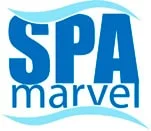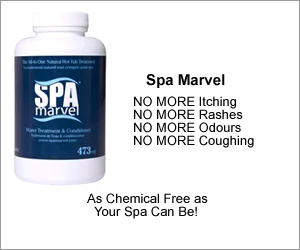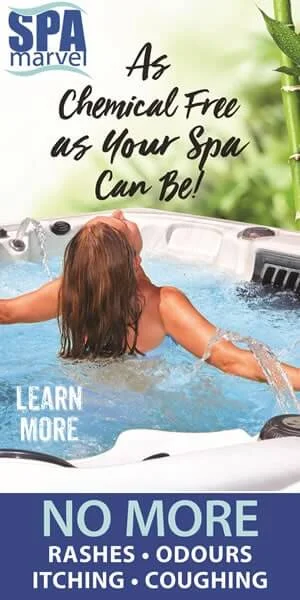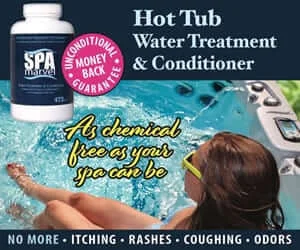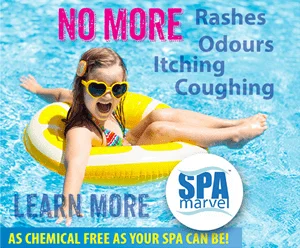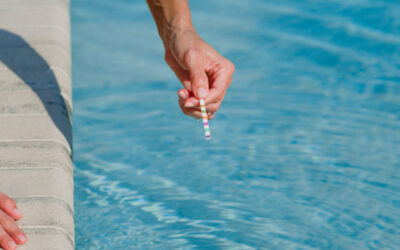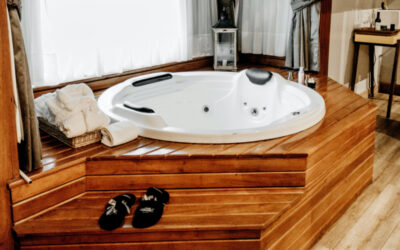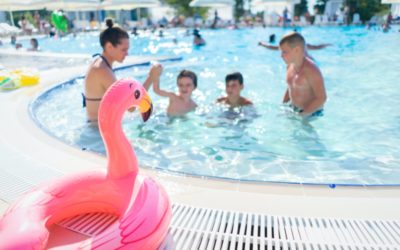Running a Hot Tub Without Chemicals for an Eco-Friendly Spa
More and more, conscientious hot tub owners wanting to reduce their imprint on the planet are seeking options for running a hot tub without chemicals. Most alternatives do still require some chemicals or at least non-chlorine hot tub chemicals. But there are multiple systems that can substantially reduce chemical use.
Some of these options may be a bit pricey and impractical for many hot tub owners. But there’s sure to be an affordable and practical alternative to chlorine in the hot tub.
Several best practices can also reduce how much chlorine or bromine is needed to keep your hot tub sanitary.
So consider the following systems for a more natural spa hot tub treatment. Then follow the tips below, to enjoy a more environmentally friendly hot tub.
More than one alternative to chlorine in a hot tub
If you’re looking for a natural spa hot tub treatment, there are multiple non-chemical hot tub systems on the market. These can dramatically reduce the amount of chlorine or other chemicals required.
Ultraviolet (UV) system
This is an excellent alternative to chlorine in a hot tub. A UV system sanitizes your spa via radiation as the water passes by the UV bulbs through a tube. Although UV systems do eliminate contaminants, you’ll still need to use shock to improve water clarity.
Biguanides. Another option for running a hot tub without chemicals is using polyhexamethylene biguanide. This gentle sanitizer requires the use of non-bromine and non-chlorine based shock. For some users, however, severe water conditions can develop. So if you decide to go back to bromine or chlorine, it’s a bit of a process. Because biguanides cannot be mixed with chlorine, you’ll need to follow a particular and careful process to convert your spa back to chlorine or bromine.
Salt-based systems
These systems eliminate the need for chlorine or bromine. But ultimately, salt-based systems don’t result in a non-chlorine hot tub. The reason for this is because the process of electrolyzing the salt actually generates chlorine. From the standpoint of having an environmentally friendly hot tub, a salt-based system may not achieve your goal.
Ozonators
This system that some use for running a hot tub without chemicals injects ozone into the water. But Ozonators are not a registered sanitizer, so generally, you need to use some sanitizer. They can, however, reduce the need for sanitizer and also the frequency of having to shock your hot tub. An Ozonator is a more costly alternative and sometimes requires hot tub modification.
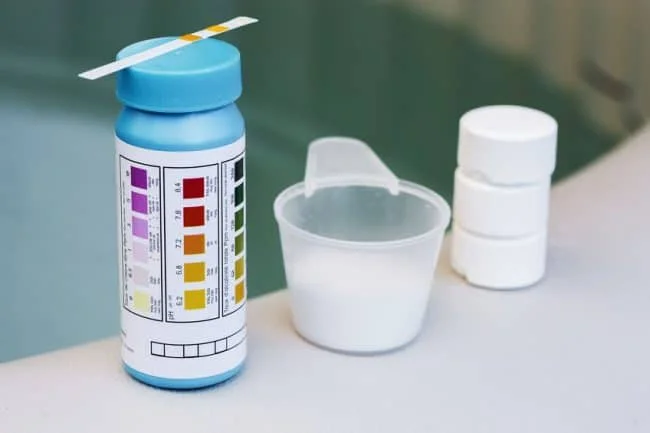
Ionizers
By releasing ions into the water, ionizers inhibit algae and bacteria. Although ionizers are a natural spa hot tub treatment, they don’t sanitize. So a sanitizer is still necessary. But as an alternative to chlorine in the hot tub, ionizers do help reduce the amount of sanitizer needed.
Non-chlorine shock
Unlike chlorine or bromine shock, a non-chlorine shock isn’t a sanitizer. So it isn’t necessarily going to be a non-chlorine hot tub. But non-chlorine shock does oxidize the water, remove contaminants, and improve water clarity. It also helps the chlorine in your hot tub work better. If you use chlorine sanitizer, non-chlorine shock creates ‘free chlorine’ in your water. In a bromine spa, non-chlorine shock activates the bromine.
Enzyme-based treatment
Another natural spa hot tub treatment is enzyme-based water treatment. While enzyme treatments don’t eliminate the need for sanitizer and shock, they can reduce the number or amount of chemicals required to maintain your hot tub water. An enzyme-based, environmentally friendly water treatment for hot tubs that can accomplish this is Spa Marvel Water Treatment & Conditioner.
Practical tips for running a hot tub without chemicals or reducing them
In addition to the above recommendations for using an alternative to chlorine in the hot tub, several hot tub care practices can reduce the use of chemicals in your hot tub.
Keep your hot tub covered
Your hot tub cover is essential to maintaining your hot tub water, whether you have a chlorine or non-chlorine hot tub. The cover blocks debris, insects, and critters from entering your water. Ultimately, this makes the sanitizer last longer and reduces the amount of chemicals needed to maintain the water. This is particularly crucial if you’re running a hot tub without chemicals.
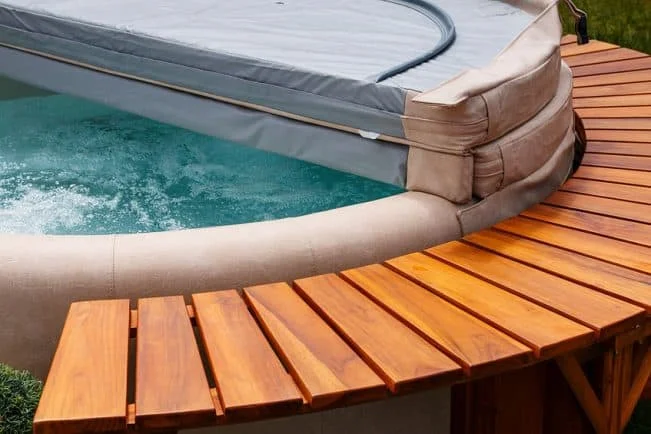
Shower before use
Reducing the amount of body oils, bacteria, and personal products that enter the hot tub water is an effective way to reduce chemical use. Before entering the hot tub, ask bathers to shower with soap and water. If they use hair products like gel or hairspray, suggest they also wash their hair or else wear a baseball cap. This will reduce the amount of sanitizer required to keep your hot tub clean.
Maintain balanced hot tub water
Whether you have a chlorine or chlorine-free hot tub, it’s essential to keep your pH, alkalinity, and water hardness within the recommended ranges. The reason is that improper levels reduce sanitizers’ effectiveness.
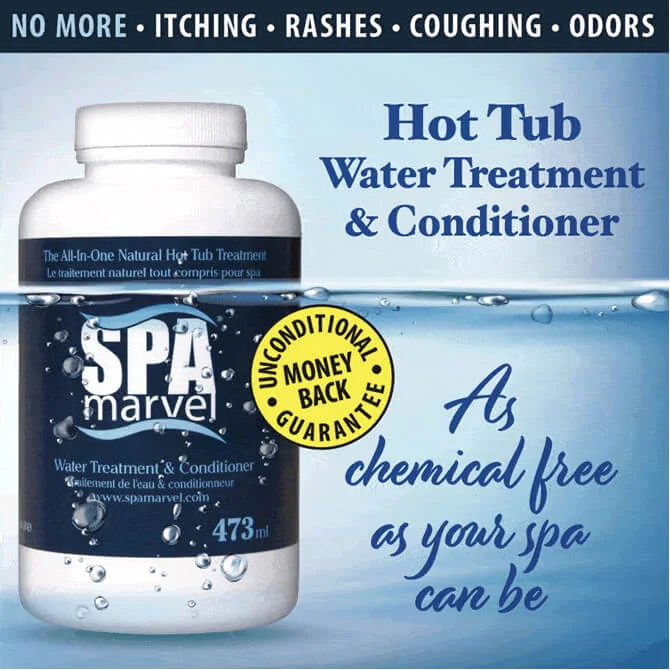
Drain more frequently
It’s generally recommended to drain your spa every 3 to 4 months, which is an essential part of hot tub maintenance. If you have a non-chlorine hot tub, it should be done every 2 to 3 months. Keeping on top of a strict maintenance schedule for draining and adequately cleaning your hot tub can reduce the amount of chemicals required for proper water sanitizer levels.
Maintain your filter
Keeping a clean filter is another essential part of hot tub maintenance that can reduce chemical use in both a chlorine or non-chemical hot tub. So check and rinse your filter weekly. Also, clean it thoroughly every month. Typically, it’s recommended to replace your filter every year, as well. Although a spa that gets very little use could be stretched to 2 years. To reduce chemicals in your hot tub, however, replace the filter twice as often as recommended based on the size and usage of your spa.
Run pump longer
The hot tub pump circulates the sanitizer and warm water. It prevents the water from becoming stagnant and a breeding ground for bacteria. So run your pump according to your manufacturer’s guidelines, or at least 8 hours per day. By keeping the water and sanitizer well circulated, the amount of chemicals required to maintain your water will be lower. This holds true whether you use chlorine or an alternative to chlorine in the hot tub.

